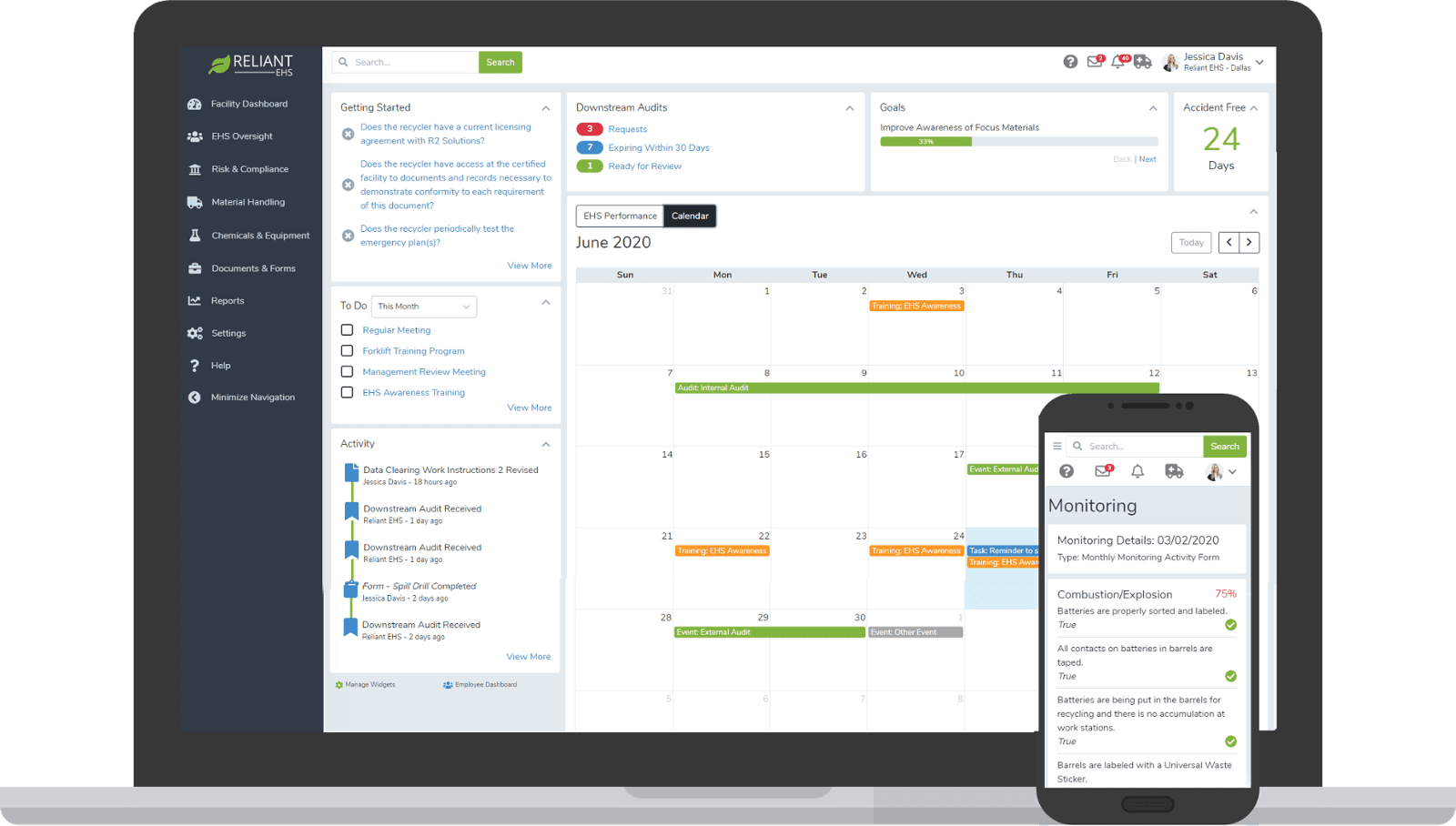According to the June 2020 NAEM Industry Benchmark study, 74-79% of companies increased their spending on Health and Safety in 2020 while responding to the COVID pandemic and more than 15% of companies reported a reduction in EHS staff.
With less staff and increased demands, EHS professionals have had to find ways to do more with less by seeking out efficiencies to drive program improvement and decrease the administrative burden associated with compliance and risk management.
As you plan your budget for 2021 and identify focus areas for your program, here are some of the top areas that other EHS professionals and companies across industries are investing in:
Adding Smart Devices
- What? Devices like smart PPE, sensors, and GPS tracking devices for shipments
- Why? Helps EHS professionals better predict and prevent EHS incidents by collecting behavioral-based safety data, constantly monitoring environmental and workplace hazards, and providing automated visibility into EHS activities
Implementing EHS Software & Apps
- What? EHS Software and Applications enable EHS managers to make EHS information available to their workforce from any device and offer features to streamline program management. Software varies depending on the solution selected but may include things like reminders for EHS tasks, monitoring forms, hazard & risk analysis, controlled document management, training, and more.
- Why? Software is increasingly being adopted and used across industries in EHS to automate reminders, improve the completion rate of tasks, reduce administrative workload, and provide insight into behavioral-based safety and proactive safety management.
Shifting Focus from Detection to Prevention
- What? Implementing reward and recognition programs focused on identifying and preventing risks and emphasizing education, training, monitoring, and employee engagement in the risk management process.
- Why? Traditionally, EHS and OHS programs have been focused on detecting unsafe conditions and mitigating risks after an accident occurs and focus on lagging indicators and responding to identified risks or hazards instead of anticipating and proactively preventing risk factors in the workplace. Tools that enable EHS managers to provide training and monitor and measure EHS performance help EHS staff focus on leading rather than lagging indicators to proactively manage workplace hazards and risks.
Increased Retraining of Workers
- What? Adapting training programs to provide both annual retraining to refresh employee safety sills alongside “micro-learning” (often delivered through LMS or EHS software) which allows employees to complete short training sessions on the device of their choosing offering training throughout the year.
- Why? As many work environments have seen changes this year due to COVID-19, EHS programs have evolved and worker training has become even more essential. Ongoing training maintains increased awareness resulting in reduced injuries, according to industry experts.
Workplace Substance Abuse and Mental Health
- What? Ensuring employees have access to substance abuse and mental health programs when needed.
- Why? The US Department of Justice estimates that approximately 50% of all workplace accidents result partly from drug abuse and 11% of workplace fatalities involve alcohol. Given these findings, and the impacts on mental health that have been caused by the global pandemic this year companies are prioritizing their investment in substance abuse and mental health resources and awareness program and, in some cases, managing these issues as EHS risks.
Increasing Company-Wide Engagement
- What? Improving employee involvement and engagement by ensuring that all employees are encouraged to participate in EHS activities and that information is accessible across the workforce.
- Why? In order to replace top-down safety strategies, companies have realized that the entire workforce (not only leadership) needs to be involved and inspired in order to create and grow a thriving safety culture. The key to EHS program adoption and success is employee engagement and companies are investing in this area.
As you plan your 2021 budget and identify ways to improve your EHS program, Reliant EHS is here to help you get to do the things you want to do by simplifying the things you must do.

Let us show you why EHS managers choose Reliant EHS.
